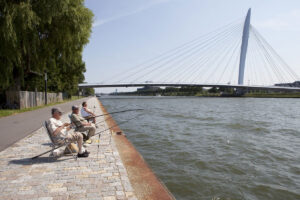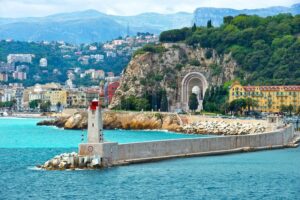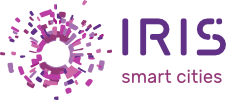![]() IS-1.1: Positive Energy Buildings (solar PV // DC // heat pumps // batteries // heat storage)
IS-1.1: Positive Energy Buildings (solar PV // DC // heat pumps // batteries // heat storage)
IRIS will demonstrate the integration and use of different technologies in buildings, capable of producing excess of energy for cooling and heating along with electricity (Plus-energy blocks), which can be redistributed to any connected with the buildings networks (MV/LV electricity grid or district heating/cooling networks).
The main technologies used will involve:
- energy efficient building envelopes, appliances, ventilations systems etc. to minimize the use of energy (state of the art technology)
- local production of electricity with solar PV
- local production of heat from geothermal energy (2-300m deep boreholes with heat pumps) d) local production of cooling from geothermal energy (2-300m deep boreholes, without chillers)
- electrical storage, Li-Ion batteries
- short time thermal storages, buffer tanks and the thermal inertia of the building frame
- long time thermal storage (2-300m deep boreholes)
THE IRIS INTEGRATED SOLUTION 1.1 IN EACH OF THE LIGHTHOUSE CITIES
NICE COTE D’AZUR, FRANCE
- High share of locally produced and consumed renewable power at district scale, offered not only by PVs but also from geothermal and available sewage plants
GOTHENBURG, SWEDEN

- Technological application for the case of Plus-energy (positive) buildings and districts
- Installation of solar panels at the rooftops
- An improvement in the construction phase through a thoroughly simulated LCA (Life Cycle Assessment) of the buildings which was improved in cooperation with the industry
- Heating from geothermal heat pumps, as well as the conventional uplinks to the grids of electricity and district heating
- Electricity from large PVs on the roofs connected with a DC electricity network for the minimization of losses
- Surplus energy storage and trading between buildings
- Near Zero Energy office blocks
![]() IS-1.2: Near zeroenergy districts (solar PV // heat pumps // DC // refurbishment)
IS-1.2: Near zeroenergy districts (solar PV // heat pumps // DC // refurbishment)
IRIS will demonstrate the integration and use of different technologies in existing apartment buildings capable of covering their energy needs, concerning electricity, heating and cooling. The focus of this solution is integration solutions to create a Near- Zero Energy Retrofit district, by reducing energy consumption and increasing renewable production.
The main technologies used will involve:
- a high share of locally produced and consumed renewable power at district scale making PV profitable without subsidies
- PV and LT for the DHN partly serving the district
- innovative home energy management system HEMS TOON
- energy savings thanks to refurbishing towards NZE 4-storey apartment buildings
- smart (hybrid) gas-electric heat pumps for heating and hot water
- energy savings thanks to smart AC/DC power grid in apartments
- smart DC street lighting at district level
- commissioning process to check from the design to the operation that innovative technologies have been correctly implemented
Next, these solutions are integrated into one smart micro-grid at district level, a stepping stone towards a NZE district composed of existing buildings with mainly social housing apartments.
THE IRIS INTEGRATED SOLUTION 1.2 IN EACH OF THE LIGHTHOUSE CITIES
UTRECHT, THE NETHERLANDS

- High share of locally produced and consumed renewable power at district scale making PV profitable without subsidies
- RES (Renewable Energy Sources) and low temperatures for the district heating system partly serving the district
- Innovative home EMS (Energy Management System)
- Energy savings thanks to refurbishing towards NZEB (Near Zero Energy Building)
- Smart (hybrid) electric heat pumps for heating and hot water
- Energy savings thanks to smart AC/DC power grid in apartments
- Smart DC lighting at district level
NICE COTE D’AZUR, FRANCE

- Feeding of available waste heat in an LT (Low Temperature) district heating system covering the local area citizen needs for heating
GOTHENBURG, SWEDEN
- NZEB refurbishment
![]() IS-1.3: Symbiotic waste heat (waste streams // circular economy // biofuels // energy management tools)
IS-1.3: Symbiotic waste heat (waste streams // circular economy // biofuels // energy management tools)
IRIS aims to replicate already conducted studies and demonstrations for waste heat utilization, originating from different plant sources, as an alternative high efficiency pathway for energy production, in line with EU policy makers about promotion of industrial symbiosis, already having proven that citizens can benefit from that. These activities, will be super-visioned by smart energy management schemes (SEMS), for which all three LHs have a considerable know-how to develop and apply in real-life actions.
Novel elements as those of:
- smart collection of waste streams
- use of produced biogas as an energy carrier for mobile services
will be added in the context of currently operating sewage sludge or waste gasification plants.
THE IRIS INTEGRATED SOLUTION 1.3 IN EACH OF THE LIGHTHOUSE CITIES
NICE COTE D’AZUR, FRANCE
- Energy savings thanks to refurbishing of current buildings towards becoming NZEB and demonstration of advanced RES harvesting techniques which can allow the future large-scale operation of energy positive buildings

